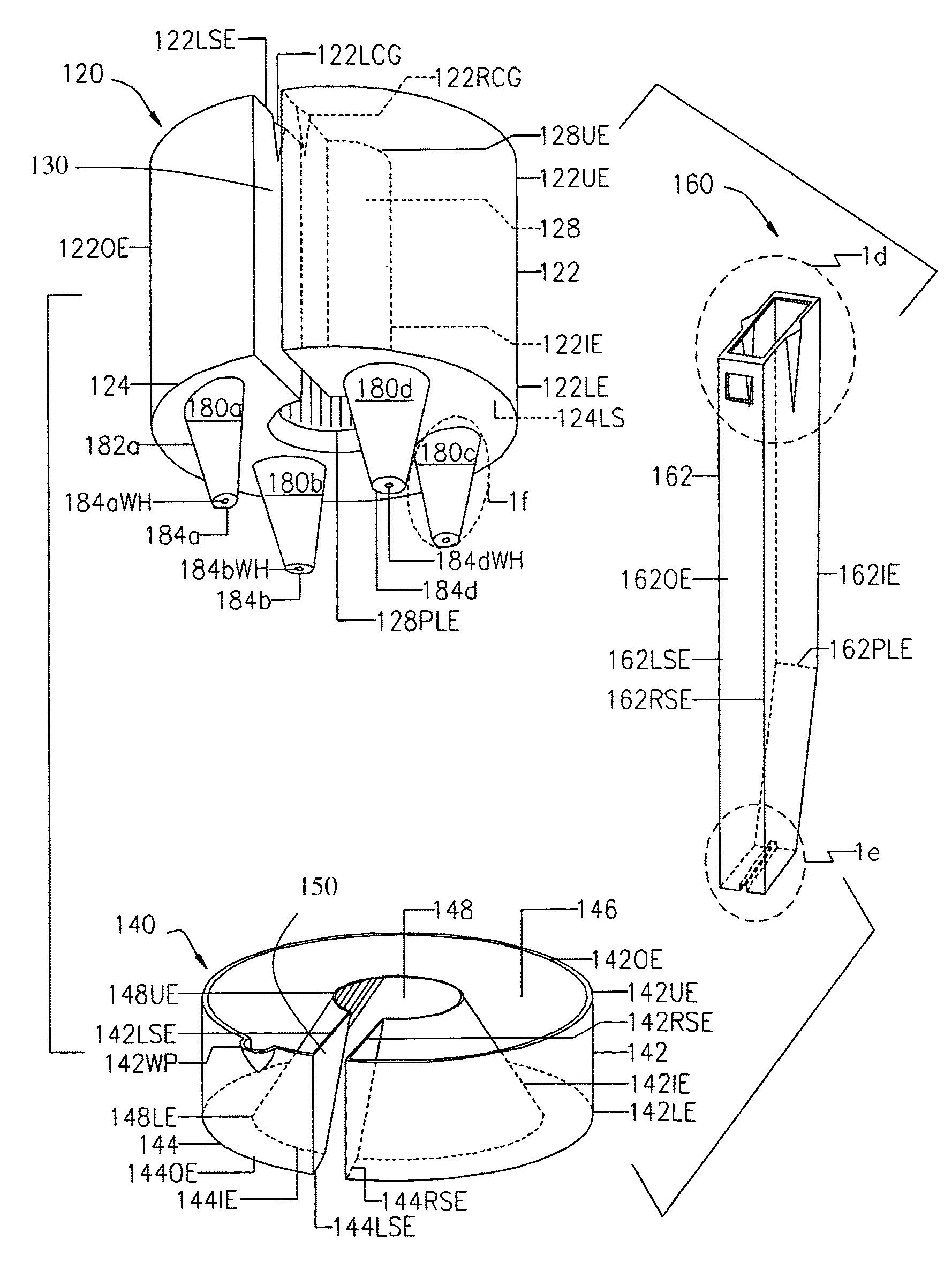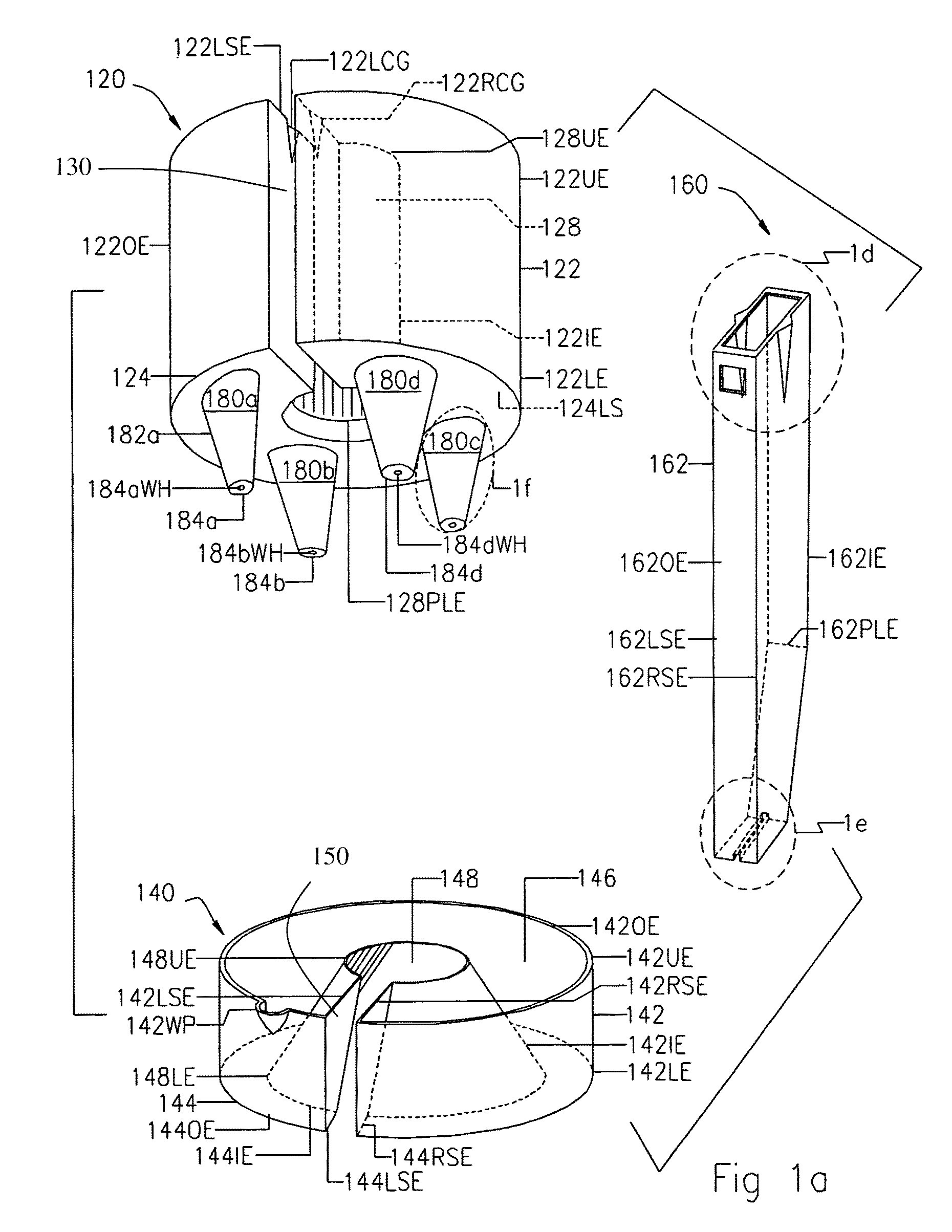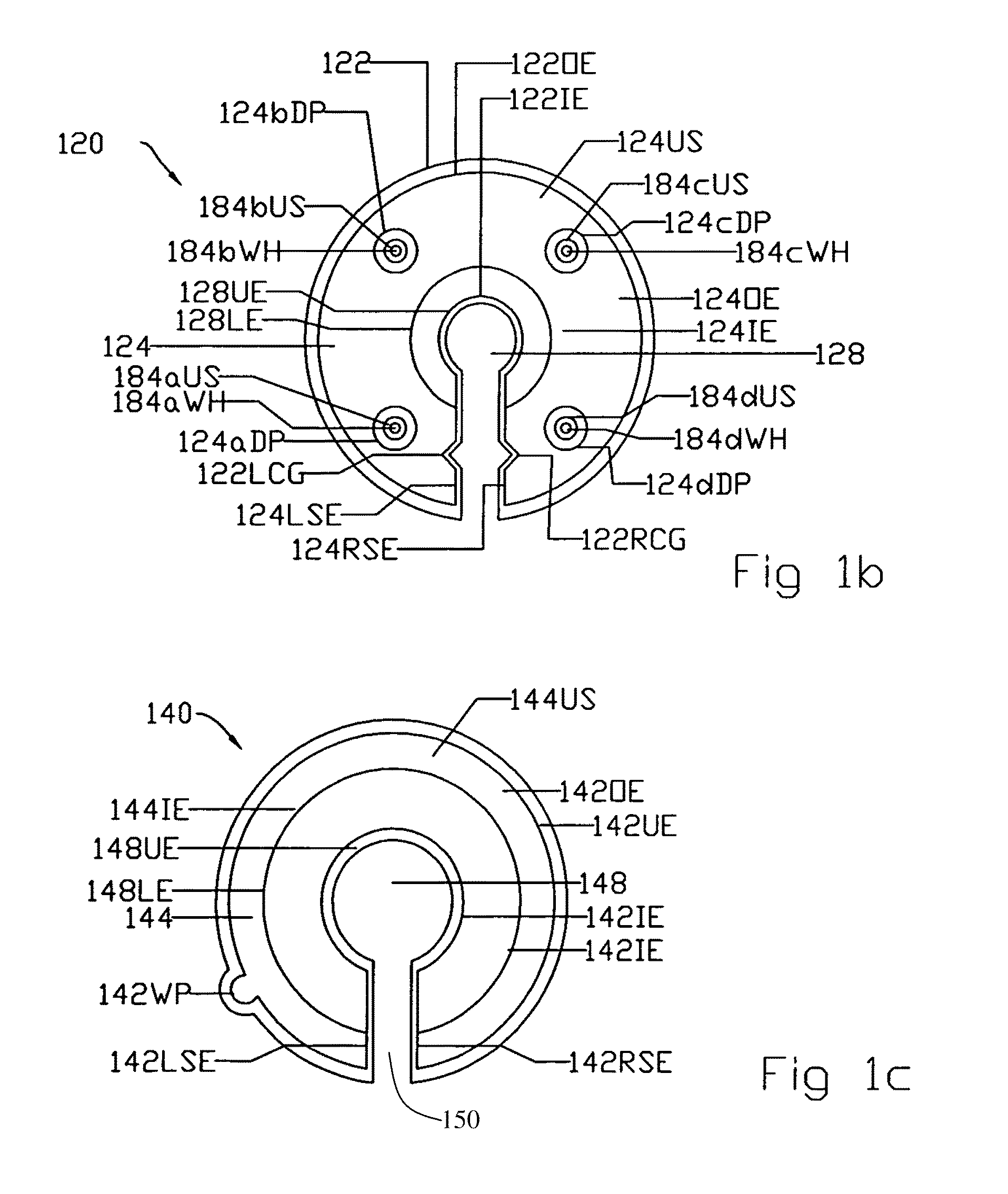Decorative pole and base stand stabilizing container
a technology for stabilizing containers and decorative poles, which is applied in the field of decorative poles and stabilizers, can solve the problems of reducing the stability of the base stand, affecting the stability of the container, so as to reduce the wobbling of the base stand and discourage accidental bumping
- Summary
- Abstract
- Description
- Claims
- Application Information
AI Technical Summary
Benefits of technology
Problems solved by technology
Method used
Image
Examples
third embodiment
Alternate Third Embodiment
FIGS. 3a, 3b
[0127]The alternate third embodiment includes an upper planter section 320 with a plurality of tetra-sectional circumferentially shaped circumferentially arrayed stands 380a, 380b, 380c, and 380d (bottom perspective view and top view) shown in FIGS. 3a and 3b, respectively, a lower reservoir section 140 (top perspective) shown in FIG. 1a, and a wedge section 160 (top perspective view) shown in FIG. 1a.
[0128]All aspects of the third embodiment are the same as the preferred embodiment except for the shape and configuration and array of a plurality of circumferentially arrayed stands 380a, 380b, 380c, and 380d being tetra-sectional circumferentially shaped instead of conical shaped. In all other aspects, the third embodiment is similar in structure as the preferred embodiment of the present invention.
fourth embodiment
Alternate Fourth Embodiment
FIGS. 4a-4c
[0129]The alternate fourth embodiment includes an upper planter section 420 and a lower reservoir section 440, both shown in top perspective view in FIG. 4a. FIGS. 4b and 4c show the alternate fourth embodiment in top view.
[0130]All aspects of the fourth embodiment are the same as the preferred embodiment except circumferentially arrayed stands 180a, 180b, 180c, and 180d of container 100 are excluded. Base panel 124 of upper planter section 420 is now a continuous surface with a plurality of longitudinal through-holes or drain ports 124aDP, 124bDP, 124cDP, and 124dDP.
[0131]In all other aspects, the fourth embodiment is similar in structure to the preferred embodiment of the present invention.
fifth embodiment
Alternate Fifth Embodiment
FIGS. 5a-5d
[0132]The alternate fifth embodiment includes a planter section 520 (top perspective view and top view) shown in FIGS. 5a and 5b, respectively, and a wedge section 160 (top perspective view) shown in FIG. 1a.
[0133]FIGS. 5a and 5b show an alternative design that combines upper planter section 120 and lower reservoir section 140 of the preferred embodiment to form a single planter section 520 of the alternate fifth embodiment.
[0134]FIG. 5a gives a good view of the fixture void 528 comprising of a pole void 528PV in the upper portion and a base void 528BV in the lower portion, as well as wedge void 130. As can be seen, said fixture void 528 connects to wedge void 130 that comprises an empty space in said container or said upper planter section capable of admitting the pole in said pole void (528PV), and capable of admitting the pedestal or base stand in said base void (528BV).
[0135]As further can be seen in FIG. 5a, the container wedge void 130 is...
PUM
| Property | Measurement | Unit |
|---|---|---|
| diameter | aaaaa | aaaaa |
| volume | aaaaa | aaaaa |
| perimeter | aaaaa | aaaaa |
Abstract
Description
Claims
Application Information
 Login to View More
Login to View More - R&D
- Intellectual Property
- Life Sciences
- Materials
- Tech Scout
- Unparalleled Data Quality
- Higher Quality Content
- 60% Fewer Hallucinations
Browse by: Latest US Patents, China's latest patents, Technical Efficacy Thesaurus, Application Domain, Technology Topic, Popular Technical Reports.
© 2025 PatSnap. All rights reserved.Legal|Privacy policy|Modern Slavery Act Transparency Statement|Sitemap|About US| Contact US: help@patsnap.com



